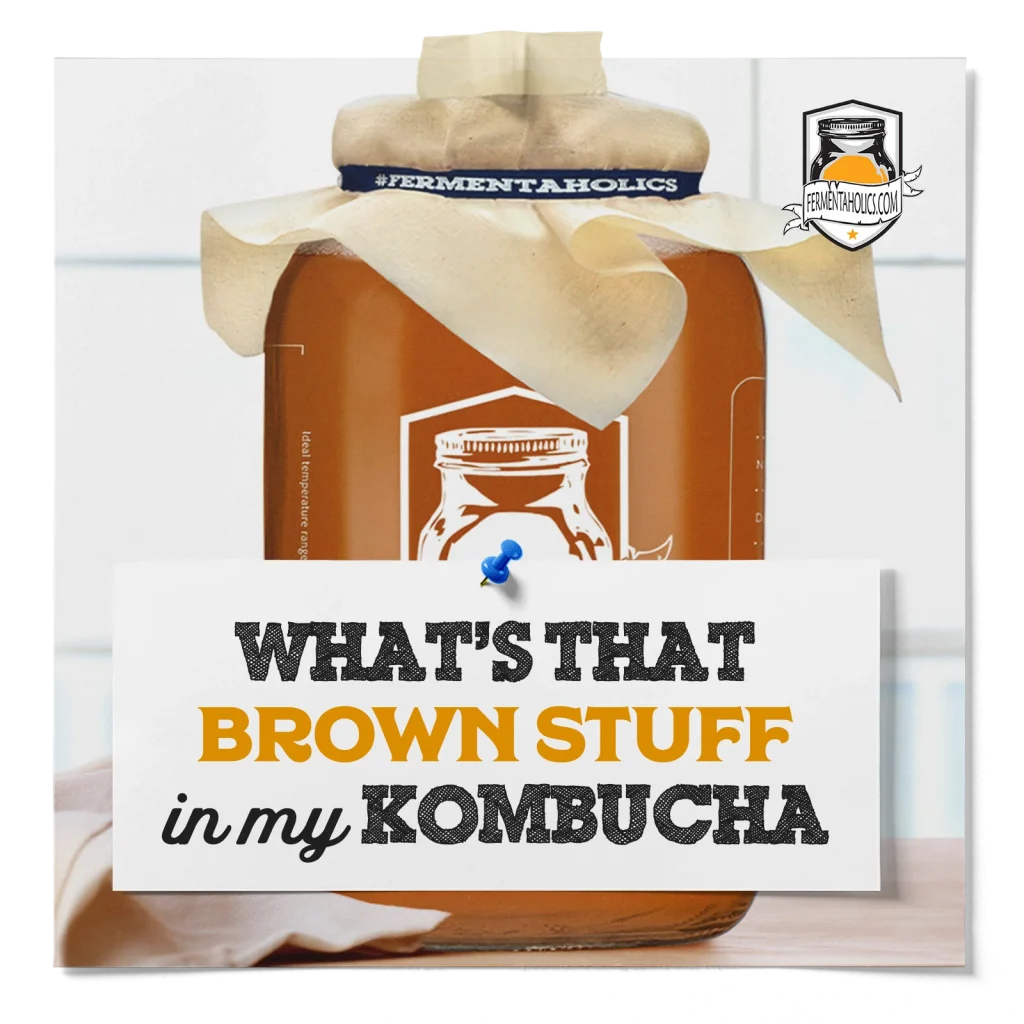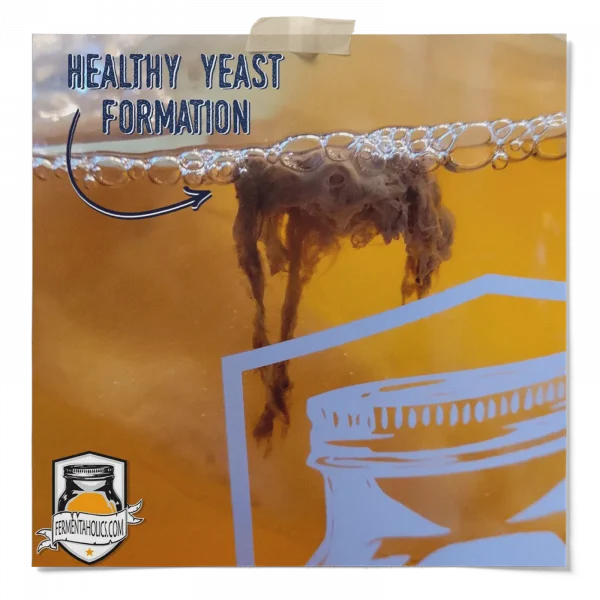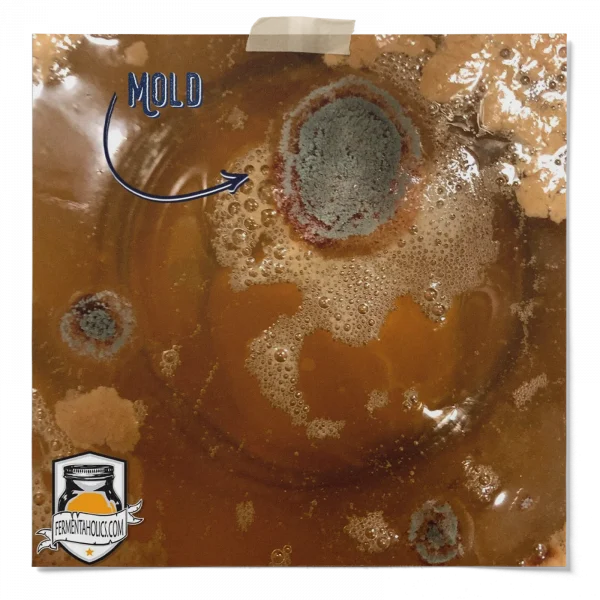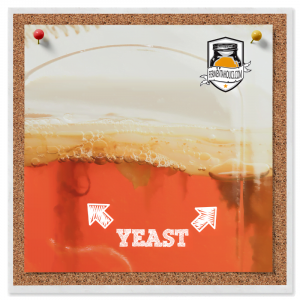
Have you started to make kombucha and looked inside to find scary black or dark brown globs on top? Is it mold? No, it’s yeast. At first glance, these globular formations of brown, buggy texture can be off-putting and discouraging. It’s also very common for new kombucha brewers to mistake this yeast for mold.
Do not fear! These brown globs are perfectly normal and are part of a natural and healthy process that occurs during the fermentation of kombucha.
If you see brown stringy/globular structures in your kombucha, you can rest easy knowing that your yeast is active and doing its thing!


Yeast has a natural adversity to alcohol, which they themselves produce. You can see how this would be conflicting. To circumvent this issue, yeast has developed a survival mechanism that allows them to clump together and avoid contact with their chemical stressors. Similar to how fish school together, although these yeast structures are much more tight-knit. This evolutionary marvel was actually reverse-engineered and studied by a team of Harvard scientists who sought to figure out why yeast cells clump together particularly brewer’s yeast. You can find the scientific article here: yeast flocculation; it’s really interesting!
This grouping of yeast is commonly referred to as yeast flocculation. In brewing, flocculation is desirable and acts as a natural clarifying agent. Some particular yeasts are better at flocculating than others, which is why you find variations in different beer styles and kombucha as well.

Yes, it is perfectly edible! Filtering out the yeast would only be done out of personal preference. If clumps of yeast get into your bottles, you may see an increase in carbonation, which could be good or could be bad depending on your brewing temperature and situation. If the flocculation is just ridiculous and taking over your brew, you can filter it out to help balance the culture. This is more common with Jun cultures, which seem to be more heavily populated with yeast than bacteria, which can create some really impressive yeast structures.
So, if you see some weird brown stuff floating around in your brew, you can go ahead and smile rather than worry. Your brew is happy, and you should be too!
